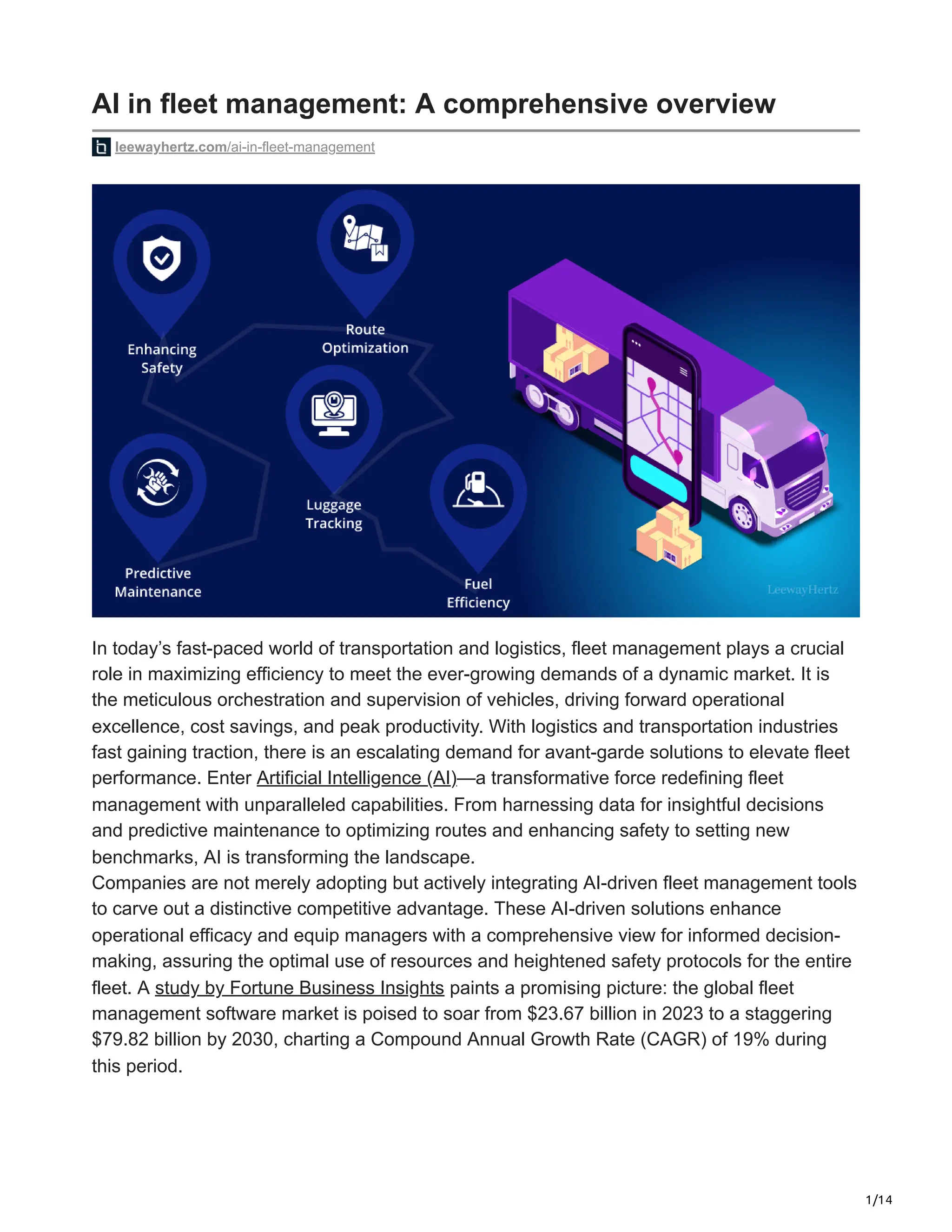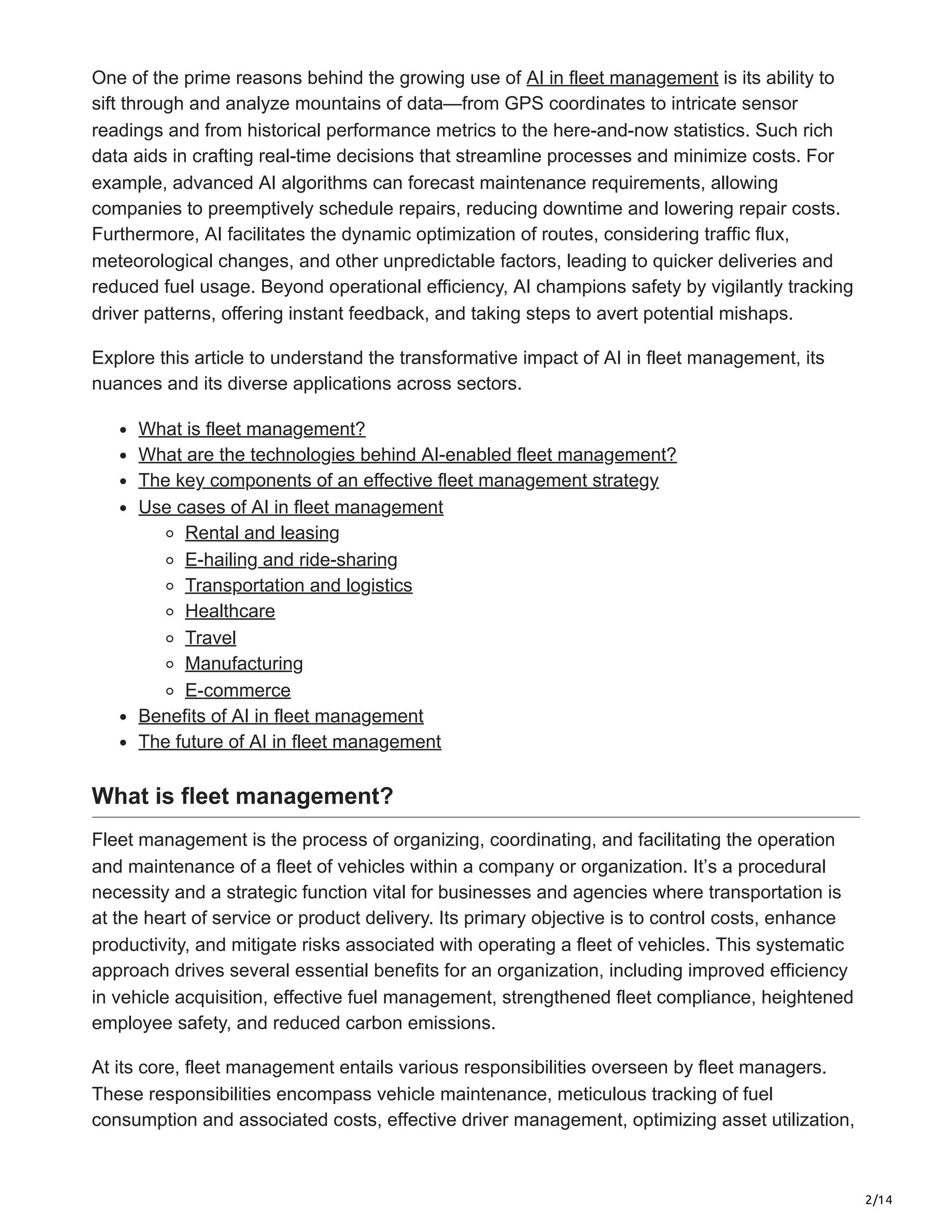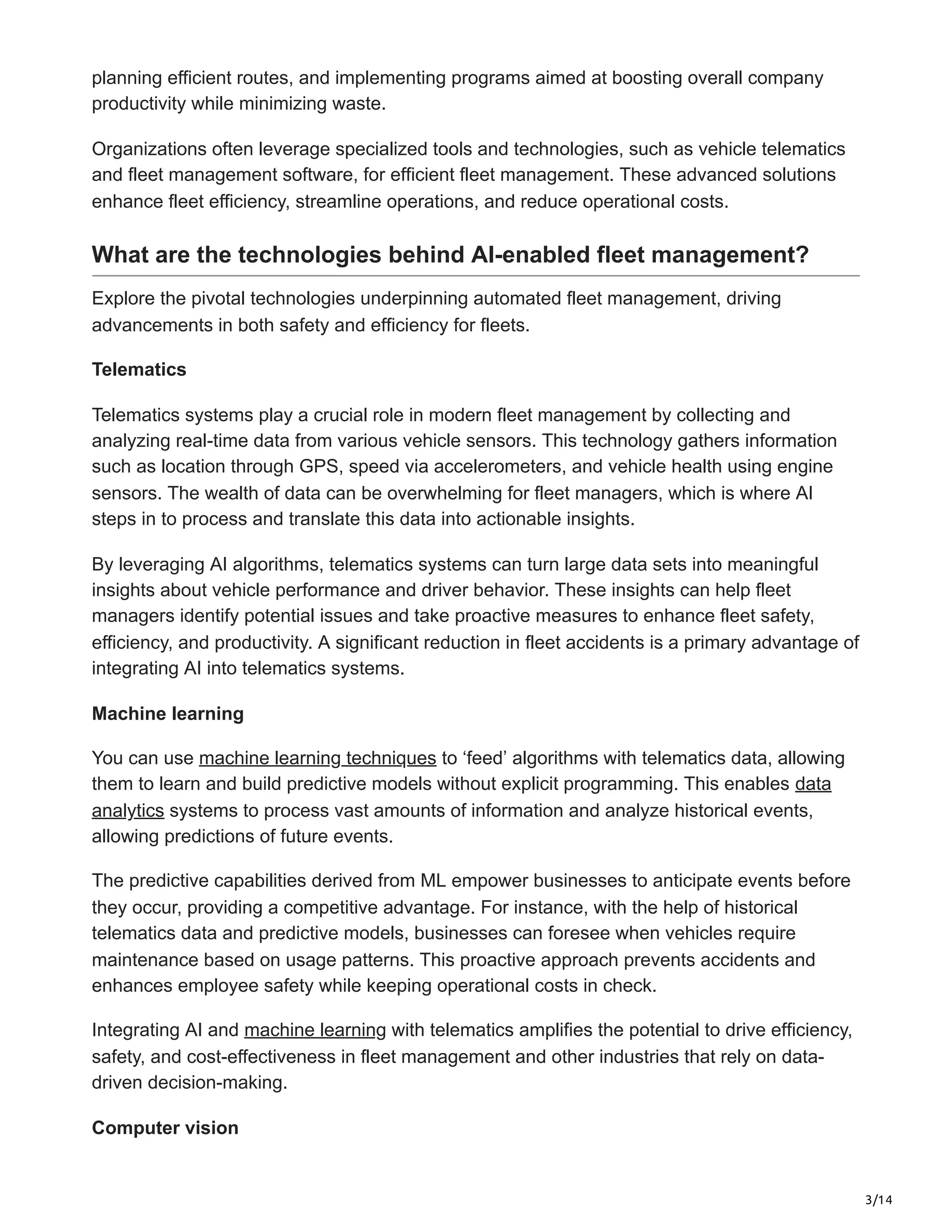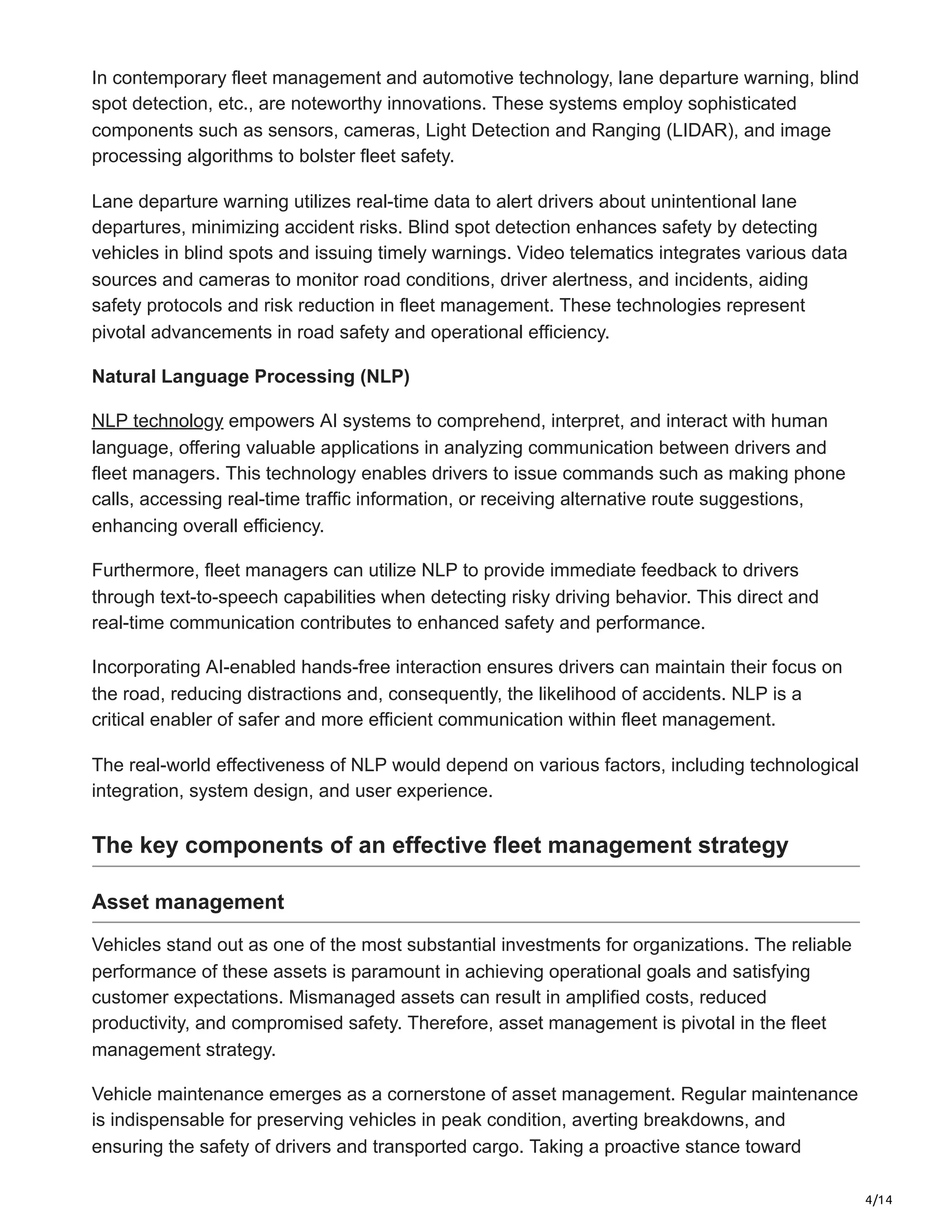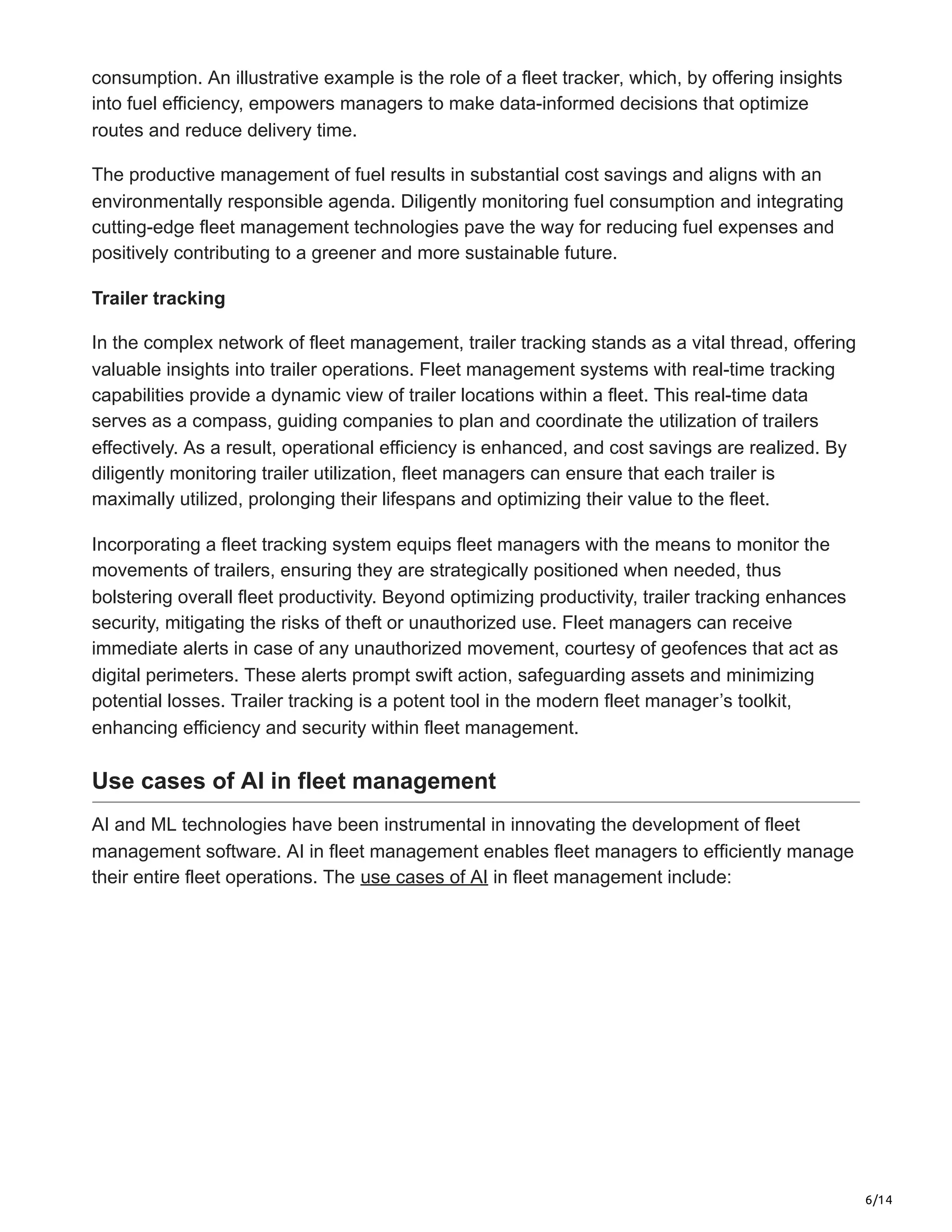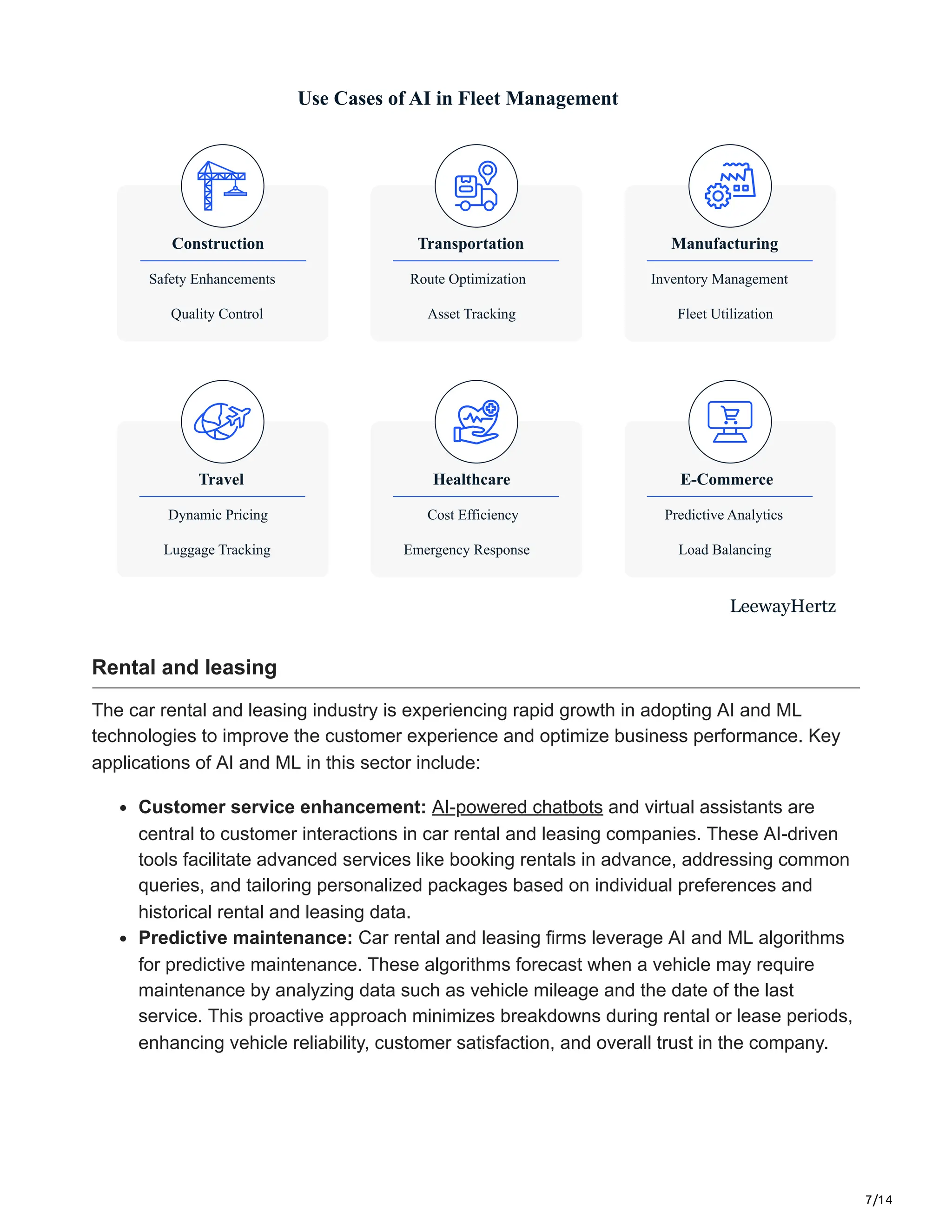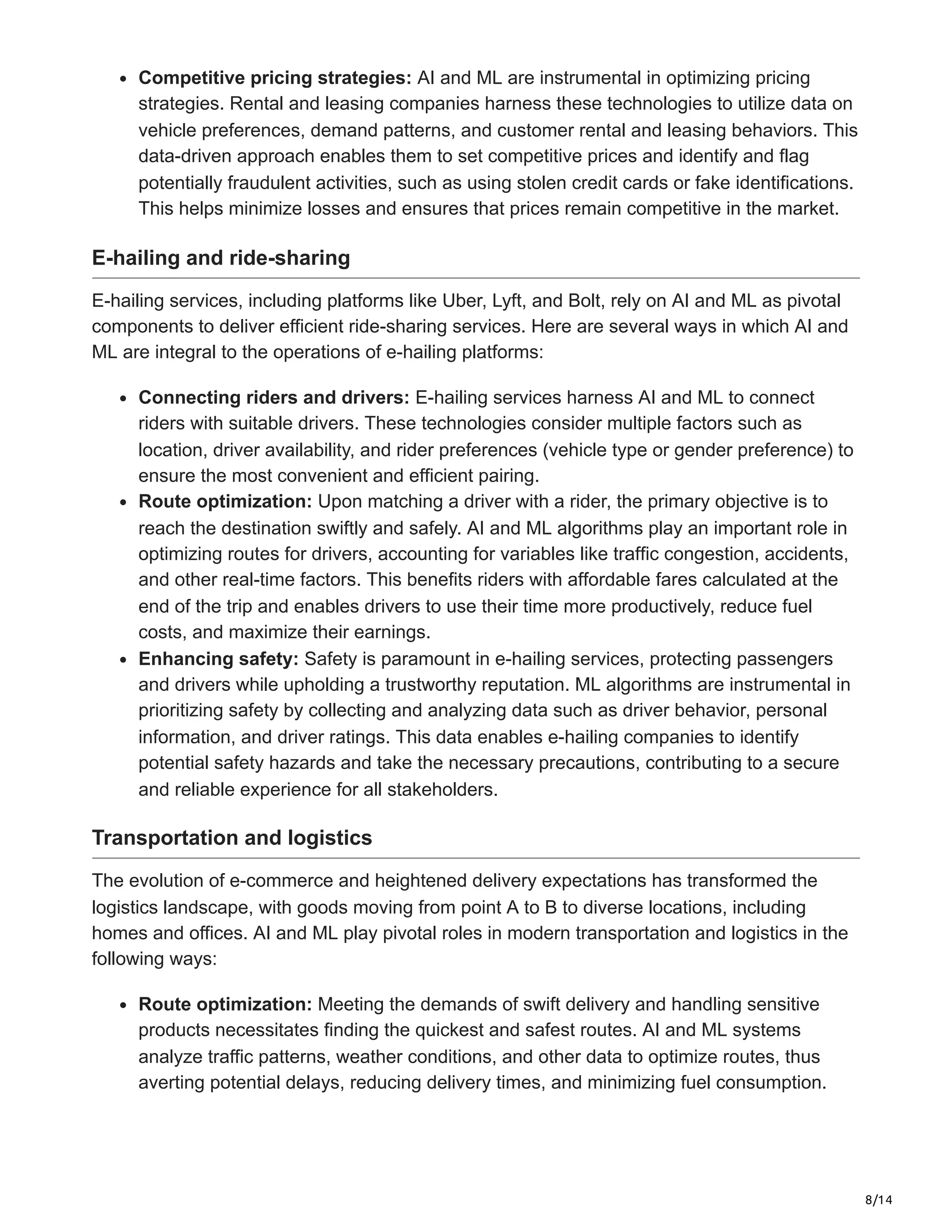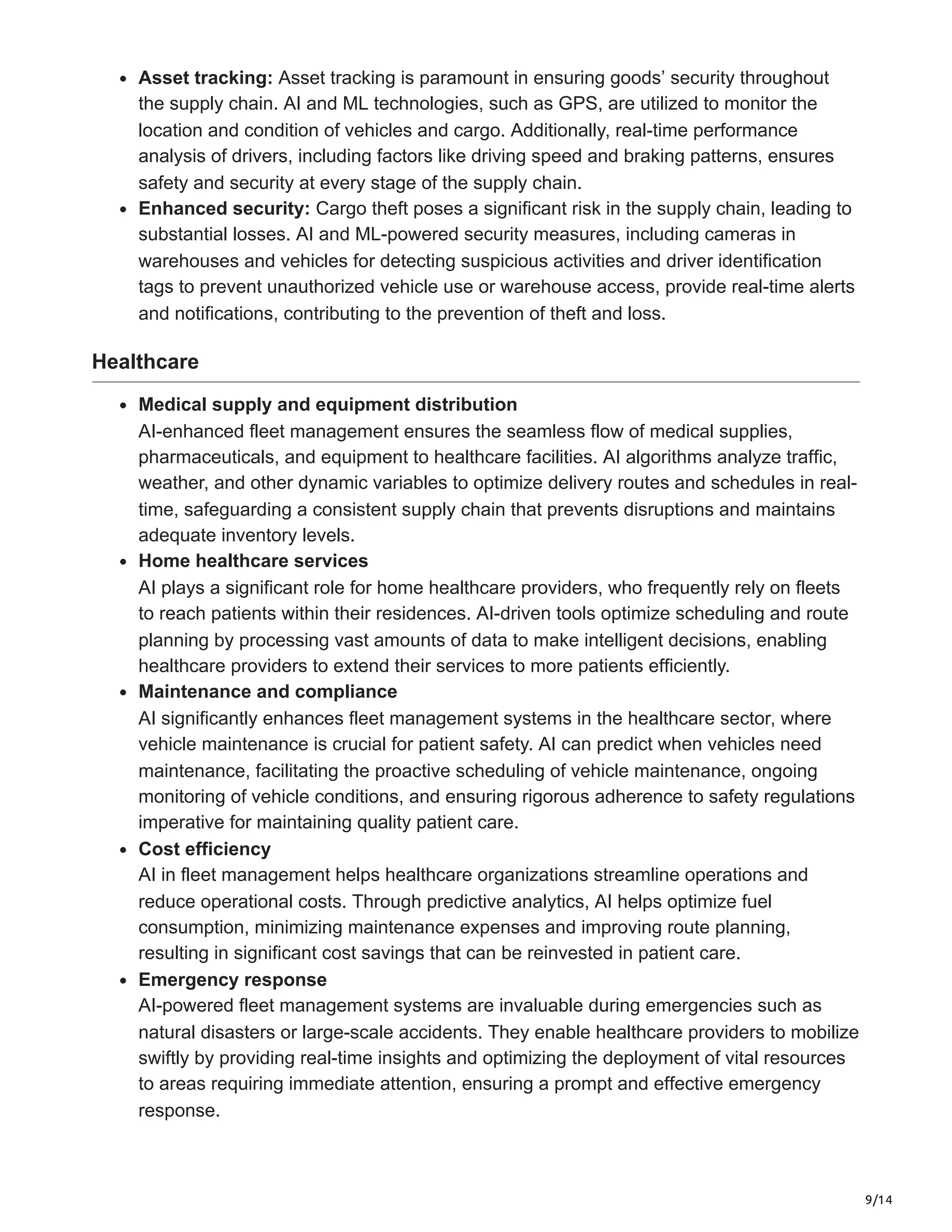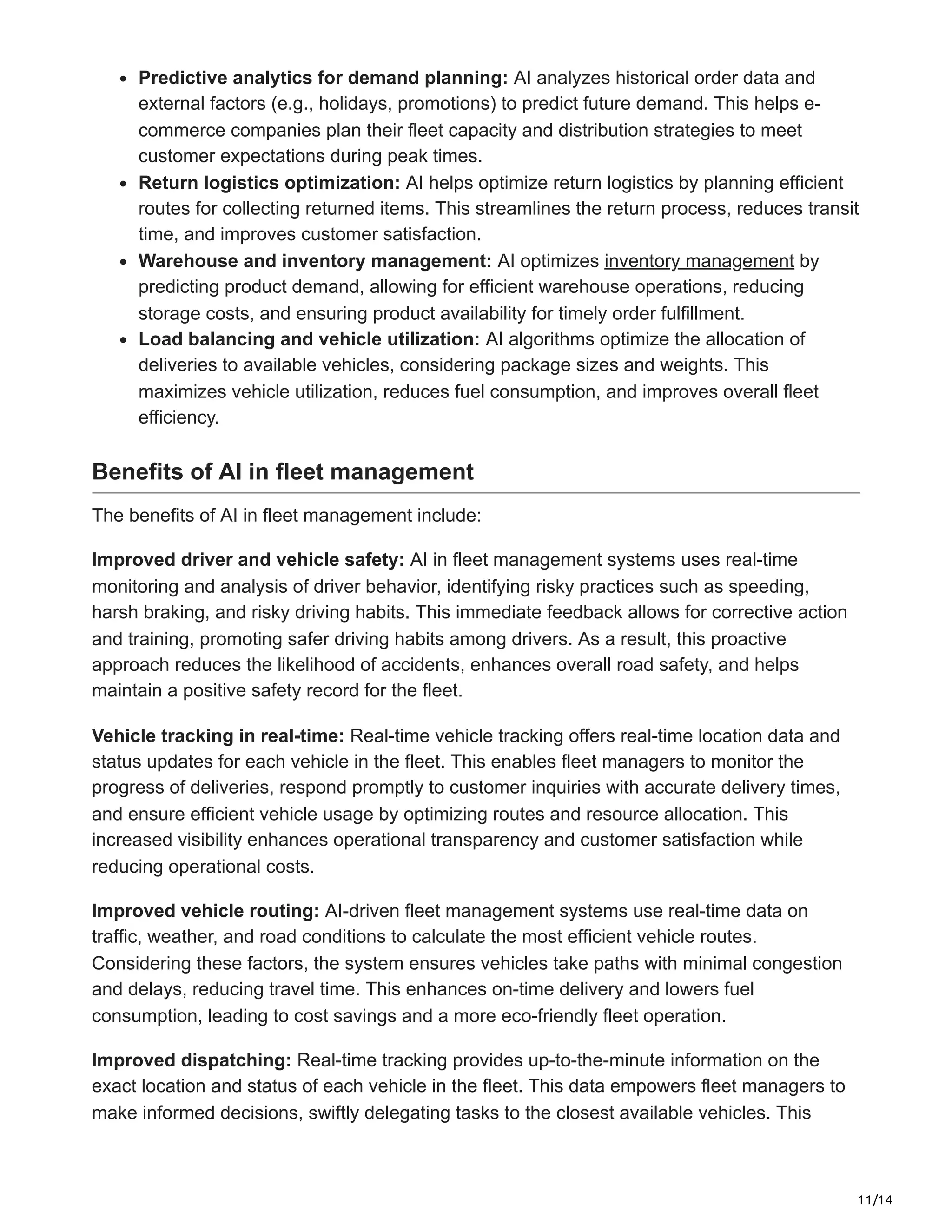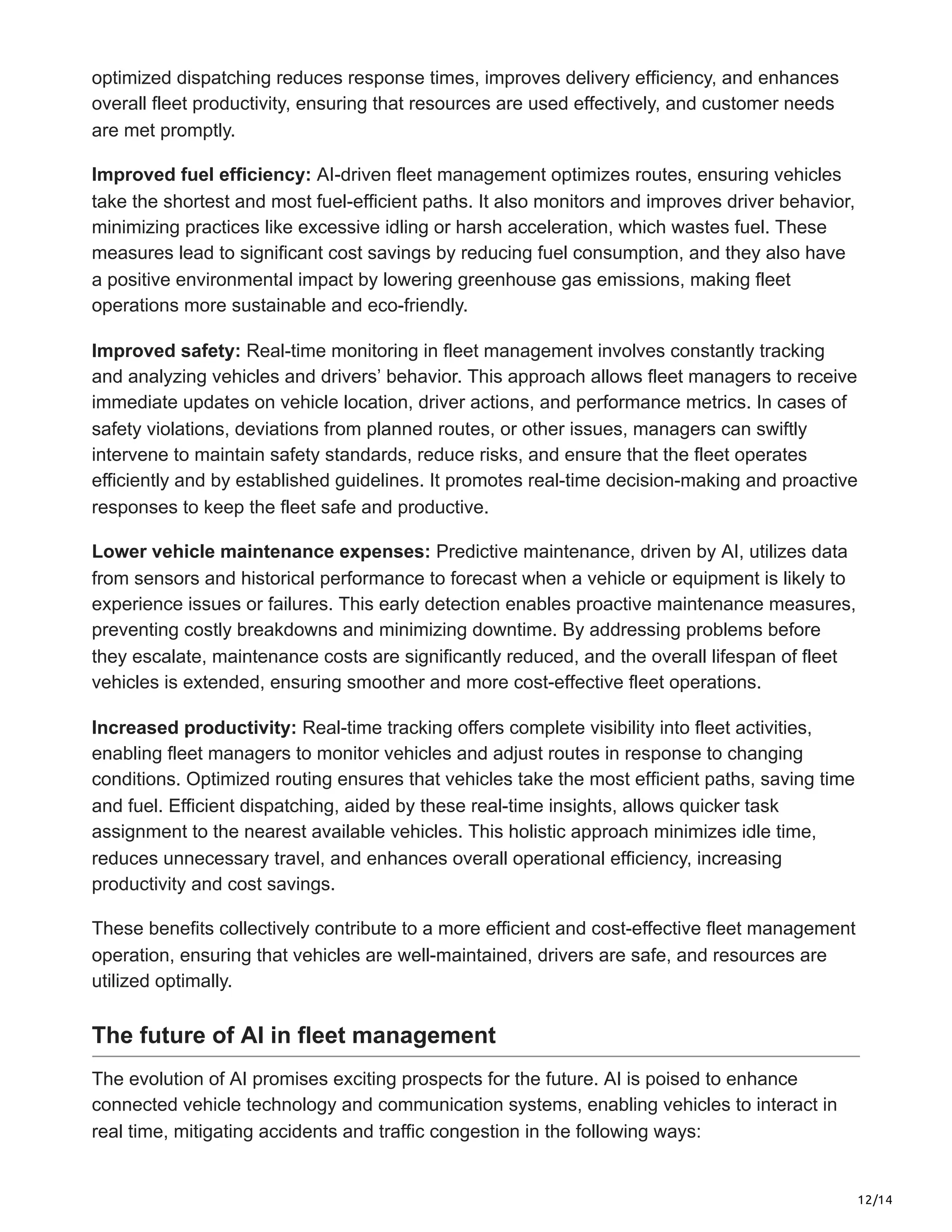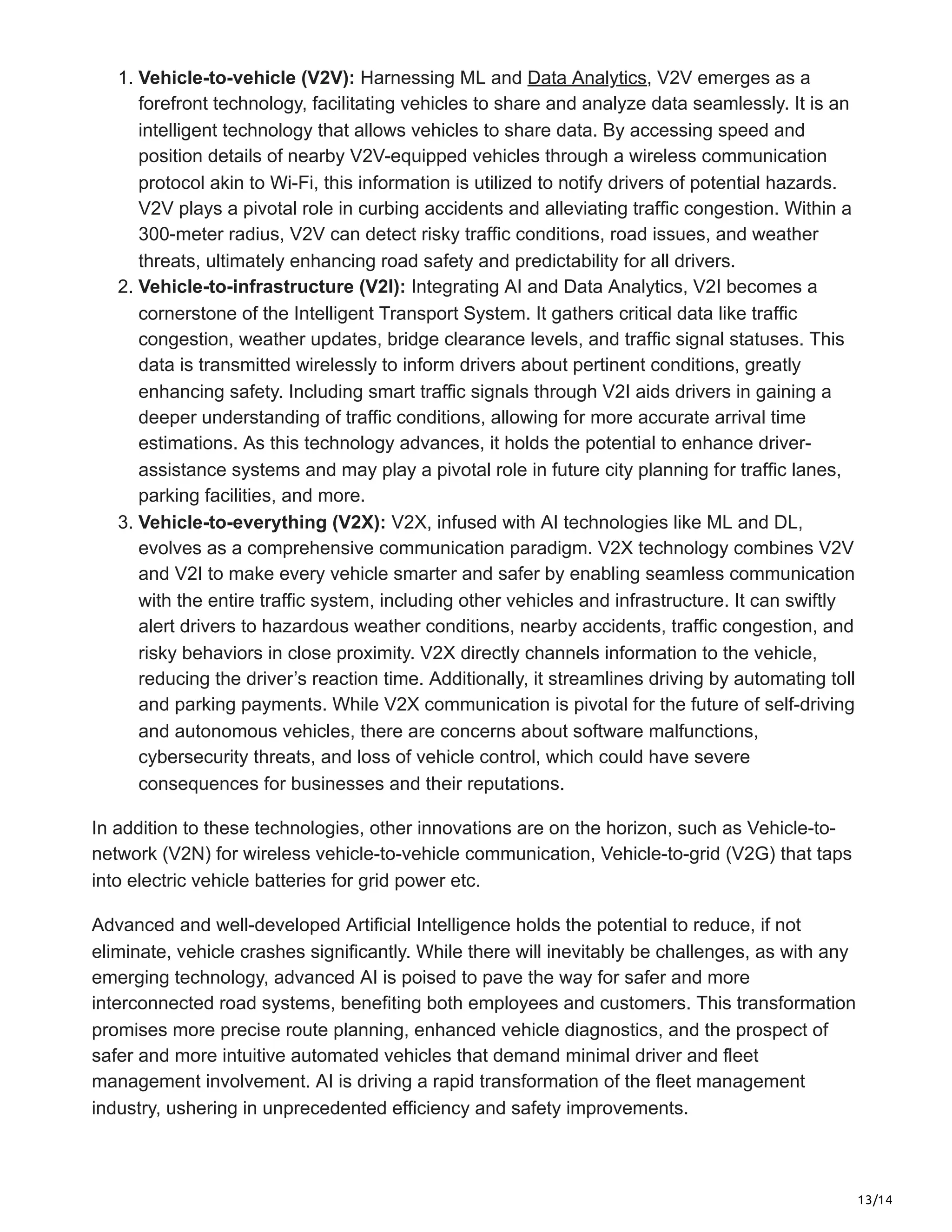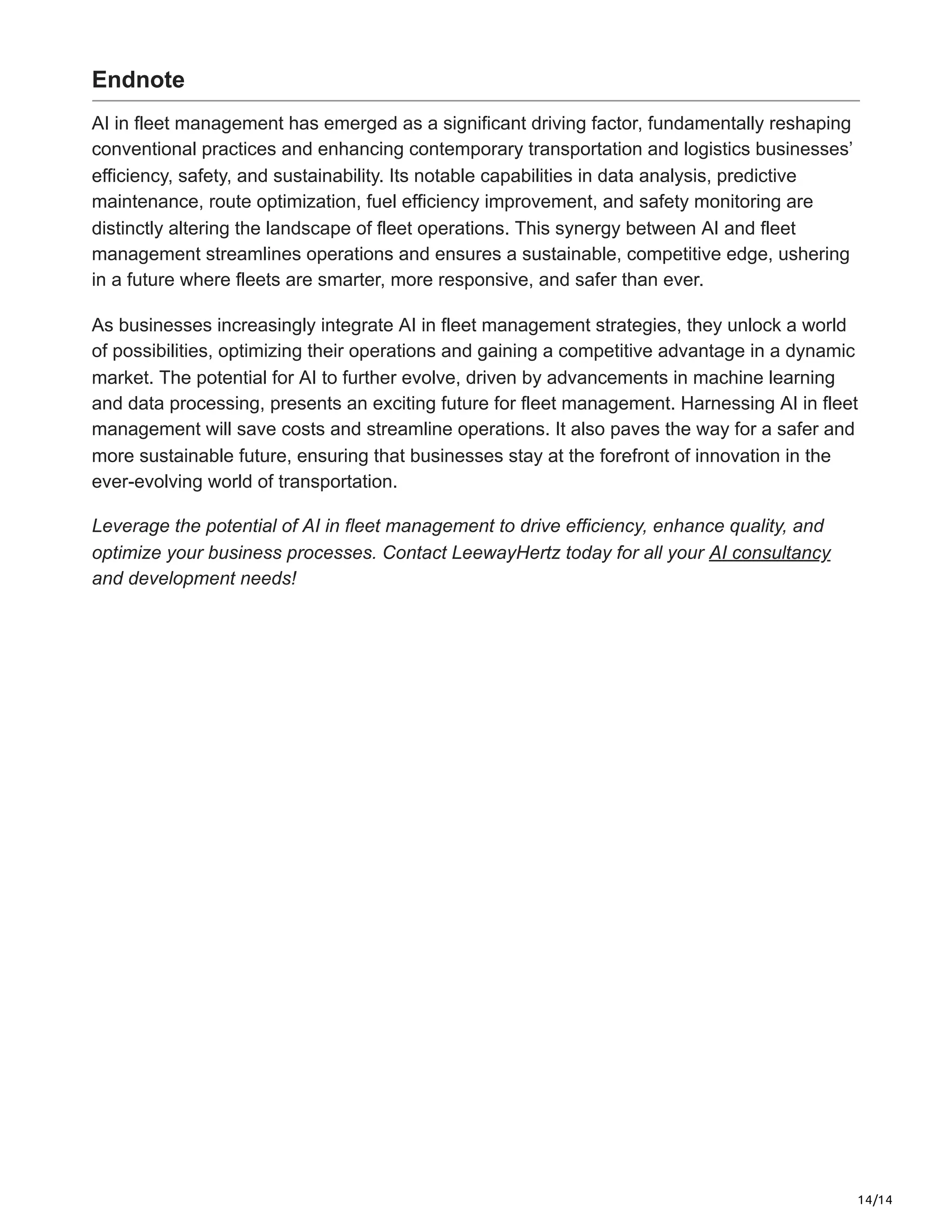The document provides a comprehensive overview of the integration of artificial intelligence (AI) in fleet management, highlighting its role in enhancing operational efficiency, safety, and cost savings in the transportation and logistics sectors. AI technologies, such as telematics, machine learning, and natural language processing, enable real-time data analysis for route optimization, predictive maintenance, and effective driver management, leading to an expected growth of the global fleet management software market. Additionally, various use cases of AI in sectors like e-commerce, healthcare, and travel illustrate the transformative potential of AI in streamlining fleet operations.
